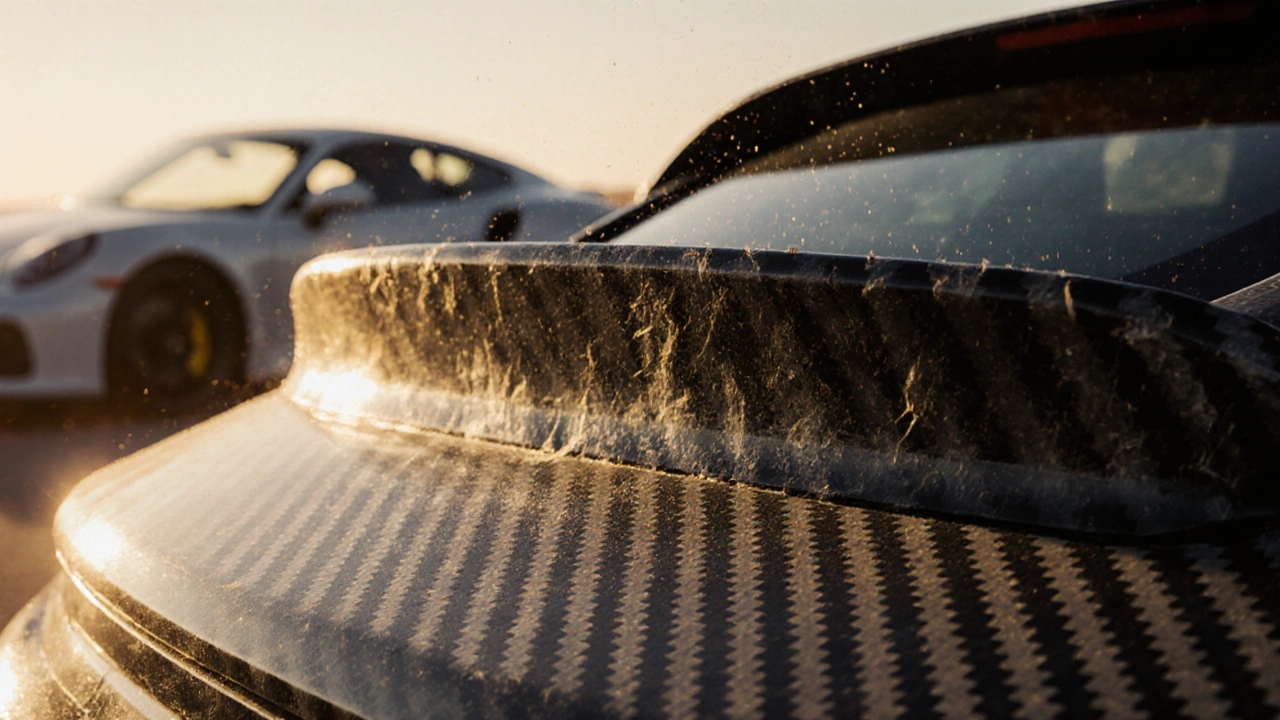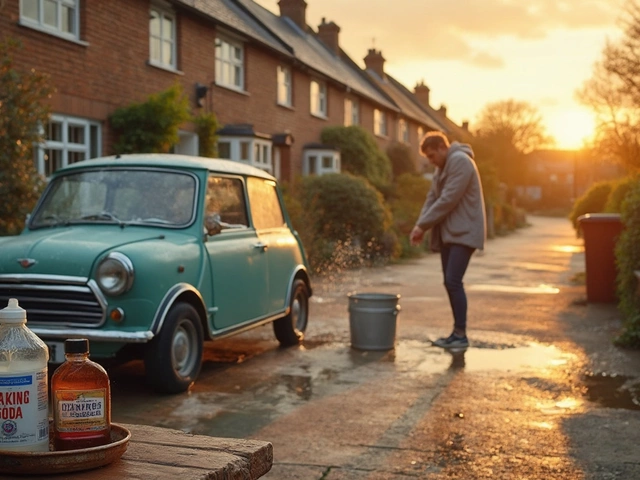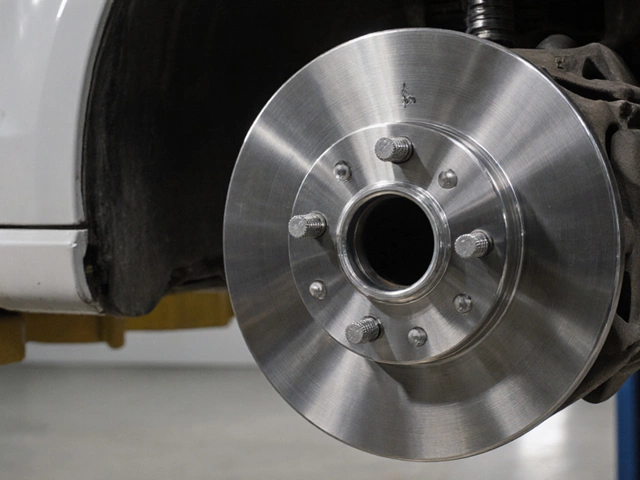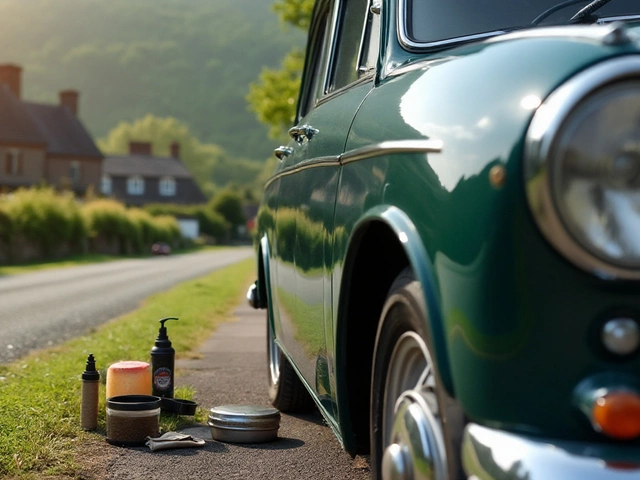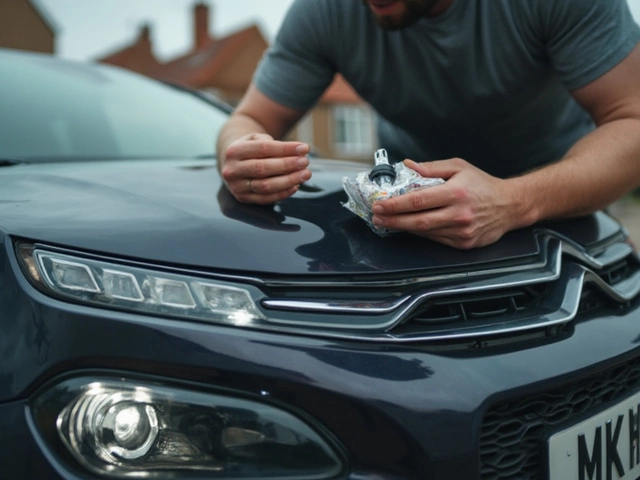Carbon Fiber Spoiler Damage Risk Calculator
Your Spoiler Risk Assessment
Key Damage Factors
Carbon fiber spoilers look sharp. They scream performance, reduce lift, and turn heads on the highway. But if you’ve ever seen one with cracks, yellowing, or flaking clear coat, you know they’re not indestructible. Carbon fiber isn’t magic-it’s a composite, and like any material, it has weak points. The real question isn’t just what damages it-it’s what damages carbon fiber spoilers most often, and how you can stop it before it costs you hundreds to fix.
UV Radiation Is the Silent Killer
Most carbon fiber spoilers come with a clear coat to protect the weave. That clear coat? It’s usually a polyurethane or acrylic resin. And UV light eats it alive. Over time, sunlight breaks down the chemical bonds in that coating. You won’t notice it at first. But after 2-3 years of daily exposure-especially in places like Brisbane with strong sun-you’ll see the surface turn hazy, then yellow, then start to craze. Tiny cracks form. Once the clear coat fails, the carbon fiber underneath is exposed. That’s when moisture, dirt, and road grime start seeping into the fibers. The result? Delamination. The layers of carbon fiber begin to separate. And once that happens, you’re looking at a full rebuild or replacement.Physical Impact: Rocks, Parking Lots, and Car Washes
Carbon fiber is strong under tension, but it’s brittle. A small rock kicked up at highway speed can chip the edge of a spoiler. A careless parking maneuver can scrape it against a curb. Even a high-pressure car wash nozzle held too close can blast away the clear coat and gouge the surface. Unlike steel or plastic, carbon fiber doesn’t bend-it cracks. And once it cracks, the damage spreads. A tiny chip can turn into a spiderweb of fractures if left untreated. That’s because carbon fiber doesn’t absorb impact the way metal does. It transfers stress directly to the weave. One bad hit, and the structural integrity of the spoiler weakens. You might not see it right away, but over time, the spoiler can warp or lose its shape under aerodynamic load.Chemical Exposure: Cleaners, Fuel, and Road Salt
Not all cleaners are safe for carbon fiber. Harsh solvents like acetone, brake cleaner, or even some degreasers can dissolve the resin binding the fibers. You might think you’re cleaning it, but you’re actually eating away at the matrix. Fuel spills are another silent threat. If you overfill your tank or have a leaky filler neck, gasoline can drip onto the spoiler. Gasoline eats through clear coats faster than you’d expect. Even a few drops left for a week can cause clouding or bubbling. And if you live near the coast or drive on salted roads in winter, salt residue builds up. Salt is hygroscopic-it pulls moisture from the air. That moisture gets trapped under the clear coat, leading to blistering and corrosion of the epoxy resin holding the carbon fibers together.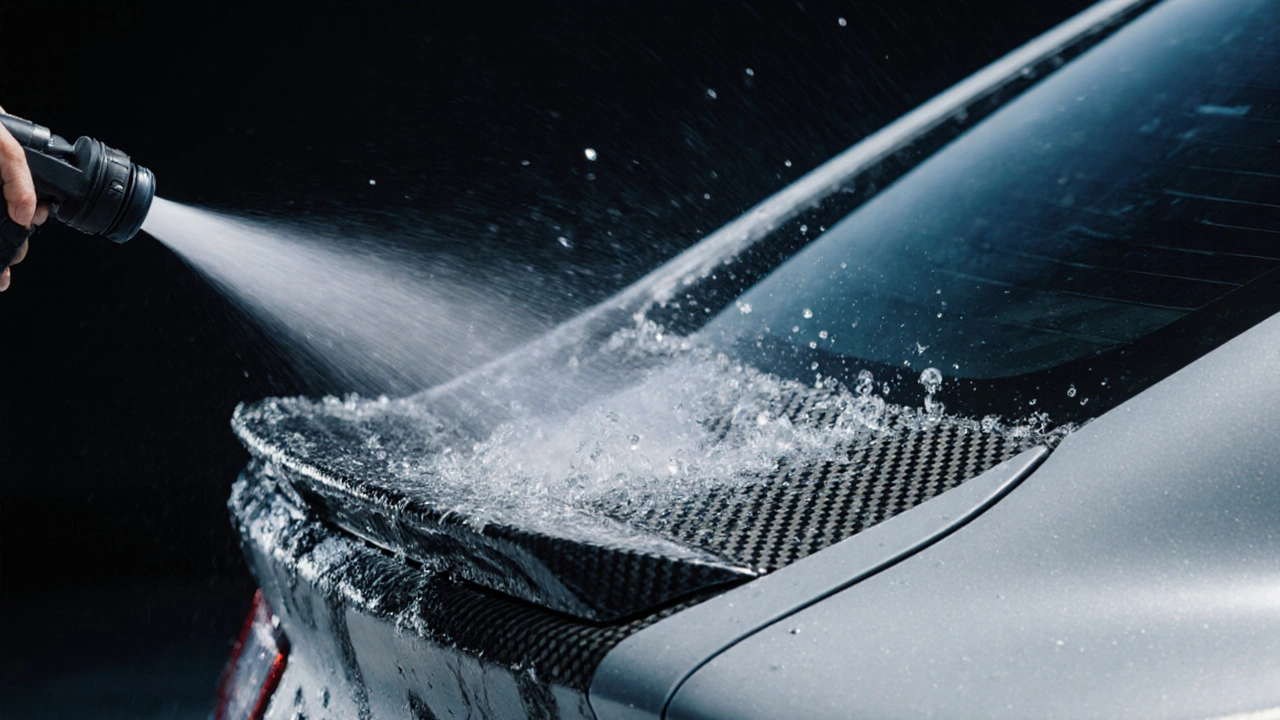
Temperature Swings and Thermal Stress
Carbon fiber has a very low coefficient of thermal expansion, meaning it doesn’t expand or contract much with heat. But the clear coat? It does. And so does the underlying substrate-usually fiberglass or aluminum. When you park your car under the hot sun, the spoiler heats up to 60°C or more. Then you drive through a rainstorm or wash the car with cold water. The clear coat cools faster than the carbon fiber beneath it. That mismatch creates internal stress. Over time, that stress causes the coating to peel or lift. This is why you often see clear coat lifting at the edges of spoilers on cars driven in places with big temperature swings. Brisbane’s hot days and sudden afternoon storms make this a common problem.Improper Installation: The Hidden Cause
A lot of carbon fiber spoilers get damaged before they even hit the road. Poor installation is a silent killer. If the spoiler isn’t mounted with the right adhesive-like 3M VHB tape or a two-part structural urethane-it can flex under load. That constant flexing fatigues the bond between the spoiler and the trunk. The adhesive fails. The spoiler starts to rattle or vibrate. That vibration grinds away at the edges. You might not notice until you see black dust under the spoiler-signs of the carbon fiber weave grinding against the trunk. Even the wrong drilling pattern can cause micro-fractures in the carbon fiber. Drilling holes without proper reinforcement or using the wrong drill bit can crack the material from the inside out.How to Protect Your Carbon Fiber Spoiler
- Apply a ceramic coating. A high-quality ceramic coating with UV inhibitors lasts 2-5 years and forms a harder barrier than factory clear coat. Look for ones rated for automotive carbon fiber.
- Wash it by hand. Use pH-neutral soap and a microfiber mitt. Never use a pressure washer within 12 inches of the spoiler.
- Store it smart. If you’re not driving it daily, cover the spoiler with a soft cloth or use a car cover. UV exposure adds up even when the car is parked.
- Check for chips early. Small chips can be repaired with clear epoxy and UV-resistant resin. Don’t wait until the damage spreads.
- Avoid chemical cleaners. Stick to products labeled safe for carbon fiber. If in doubt, test on a hidden spot first.
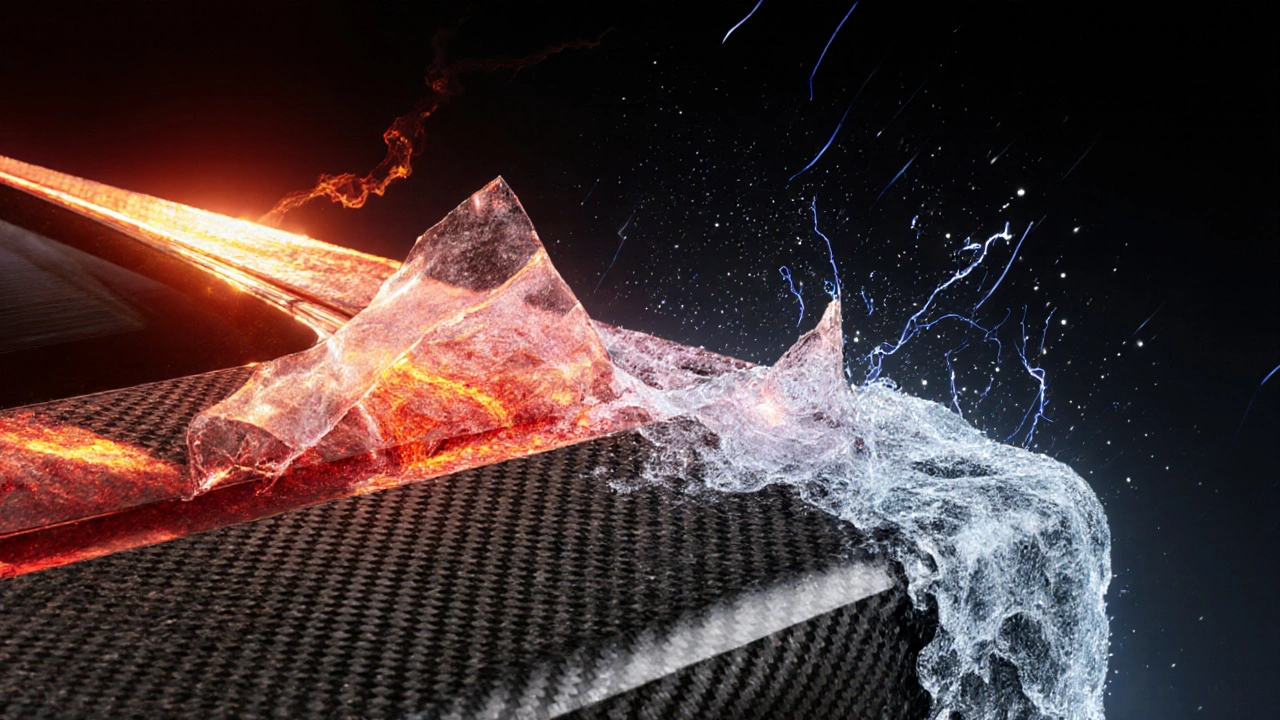
When to Repair vs. Replace
If the damage is only surface-level-light scratches, minor yellowing, or a small chip-you can fix it yourself. Sand the area with 1000-grit wet sandpaper, clean with isopropyl alcohol, apply a UV-stable clear coat, and buff. It’ll look almost new. But if you see:- Delamination (layers peeling apart)
- Deep cracks running through the weave
- Signs of the spoiler warping or detaching from the car
Real-World Example: A Brisbane Owner’s Story
A customer in Coorparoo had a carbon fiber spoiler installed on his 2021 BMW M3. He washed it weekly with a store-bought wheel cleaner he thought was safe. After 18 months, the edges started lifting. He brought it in thinking it was a bad install. Turns out, the cleaner had a high pH and dissolved the resin. The spoiler wasn’t cracked-it was dissolving from the inside. He needed a full replacement. The lesson? Not all cleaners are equal. What works on alloy wheels can destroy carbon fiber.Final Thought: Carbon Fiber Isn’t Low-Maintenance
It’s easy to think carbon fiber is high-tech and therefore tough. But it’s not bulletproof. It’s more like fine furniture-looks incredible, but needs care. Treat your spoiler like part of the car’s performance, not just decoration. Protect it from UV, impact, chemicals, and stress. Do that, and it’ll stay sharp for years. Skip the care, and you’ll be paying for a new one sooner than you think.Can I wax a carbon fiber spoiler?
No, traditional car wax isn’t recommended. It contains oils and solvents that can cloud or degrade the clear coat over time. Use a ceramic coating instead-it bonds chemically to the surface and lasts much longer without yellowing.
Is carbon fiber scratch-resistant?
The weave itself is tough, but the clear coat isn’t. Scratches usually happen in the top layer, not the carbon fibers. A light scratch can be polished out. Deep scratches that reach the weave need professional repair to prevent moisture damage.
Does rain damage carbon fiber?
Rain itself doesn’t damage carbon fiber. But if the clear coat is compromised, rainwater can carry dirt and pollutants into the weave. Saltwater or acid rain is especially harmful. Always dry the spoiler after heavy rain if the coating is old or damaged.
Can I paint over a damaged carbon fiber spoiler?
You can, but it’s not ideal. Painting over carbon fiber hides the weave and reduces its value. It also doesn’t fix the underlying damage. If the spoiler is cracked or delaminated, painting won’t restore strength. Better to repair the structure first, then reapply a proper clear coat.
How often should I reapply protection to my carbon fiber spoiler?
If you use a ceramic coating, reapply every 2-3 years. If you’re using a sealant or spray-on protectant, every 3-6 months. Check the surface monthly-if water no longer beads up, it’s time to reapply.

